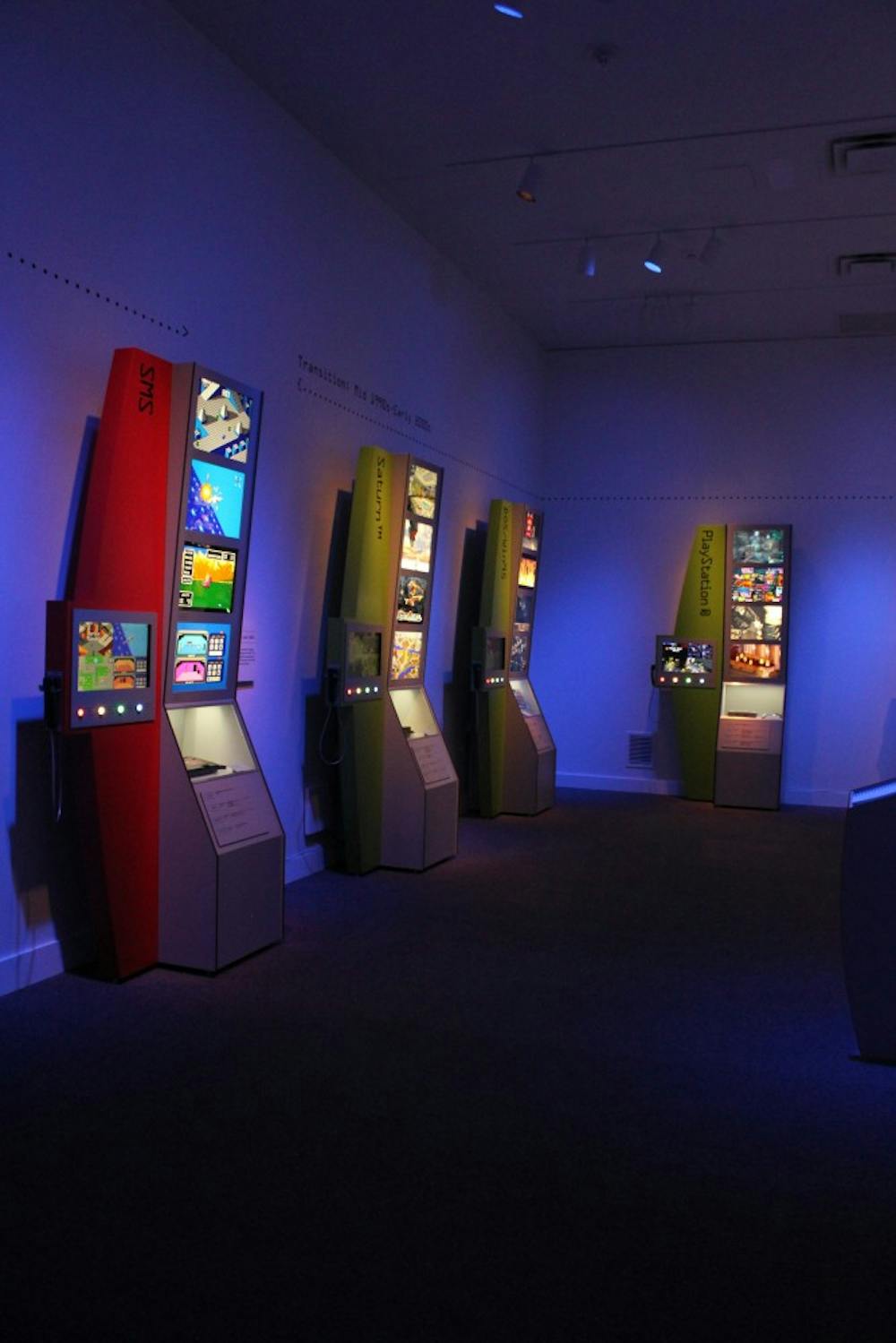Walking through the Phoenix Art Museum as I usually do on free admission days, something caught the corner of my eye -
a series of three different video panels of people focusing solely on playing video games. Scrunching up their faces, leaning forward, some even yelling, the players were captivated by the virtual world in front of them.
I had to see more. With a discounted rate of $8 (for adults) every Wednesday and First Friday of the month, The Art of Video Games is extremely affordable, especially considering General Admission tickets are $15 any other time.
Passing the player-panels, I stepped into a dim room, lit by fluorescent, multi-colored lights as well as screens projecting different video game-related interviews and videos. I first noticed the timeline at my right which showed examples of video games dating back to over forty years ago all the way up until the present day. They detailed the way in which video game design evolved over time, adding depth and dimension to both the plot and visuals.
Moving forward, large machines, reminiscent of old arcade games lined the walls, displaying games from different consoles. From the Atari VCS to the Nintendo 64 to the PlayStation 3, the exhibit covers every system of the past and present. With a tiny phone attached to the side of each machine, you can hear interviews explaining the games’ concept and design.
In the back of the room, a projector continuously loops video interviews from some of the industry’s top creators and designers, discussing the origin of video games and their progression over time.
But my favorite part of the exhibit by far were the interactive game stations. They had simple games like Pac Man and Super Mario Brothers, but they also had a demo of a 2009 PS3 game: Flower. While the other features discussed the design and art aspect of the games, Flower demonstrated the future of the video game industry.
In the game, the player takes first-person control of the wind, blowing through meadows and urban cities in an attempt to bring life and vitality back to the planet. Visually stunning and with a gameplay like none that I’ve ever seen, Flower shows just how artistic playing a video game can be. The player becomes the art and sets forth to make their virtual world a more beautiful place.
The Phoenix Art Museum also included a pixel art and Navajo Indian weaving display in the left-hand corner of the room to really tie the concept of art and video games together. Unlike a lot of pixel art, these images uncovered important past events such as the self-immolation of a Tibetan monk in the ‘60s and the OJ Simpson murder trial location. Furthermore, the Navajo Indian weavings encapsulated not only their culture, but how modern-day society is affecting it.
However, because The Art of Video Games is originally from the Smithsonian American Art Museum, the exhibit travels across he country. It will remain at The Phoenix Art Museum up until September 29 which gives you only three Wednesdays and one First Friday to get the discounted rate. The exhibit is worth a visit - it’s not only visually-appealing and educational but it also creates a sense of nostalgia and fun for long-time players.
Contact me at adersch@asu.edu or @AlexDersch with questions, suggestions or comments. The more communication I get from you the better Eye Candy will be. Thank you!






